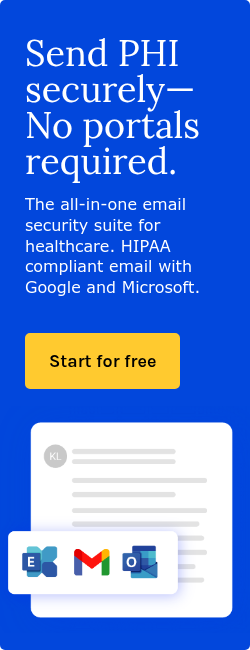
Clinical communication is a major source of errors in hospitals, often due to the lack of documentation in verbal interactions. An Applied Clinical Informatics journal article Understanding Interprofessional Communication: A Content Analysis of Email Communications Between Doctors and Nurses notes, “This demonstrates that an email-based communication system can decrease the synchronicity of the communication, which would be expected to lead to decreases in distraction and cognitive overload, and hopefully as a result to less adverse outcomes…The structured emails from nurses and other allied health clinicians were more likely to have polite modifiers in the message while physician emails were more likely to contain only neutral language.”
Email forms address this issue by providing a documented and analyzable medium for communication. For instance, a study analyzing interprofessional email communication between doctors and nurses revealed that structured emails facilitated the sharing of information and requests for action, with response times averaging 2.3 minutes. This efficiency not only reduces delays but also enhances clarity and accountability, which are critical for maintaining trust among healthcare teams.
Challenges faced in interpersonal relationships in healthcare
Developing therapeutic interpersonal relationships is necessary for delivering integrated care, especially for individuals with multimorbidity and complexity. However, challenges arise from power struggles within healthcare teams and difficulties in managing family dynamics, such as withholding information or posing unrealistic demands.
According to the Sage Choice study Nurses’ Challenges to Developing Interpersonal Relationships During Integrated Care for Complex Patients, “Power struggles to demonstrate authority in decision-making were common within health care teams, affecting nurses’ professional capacity to provide effective care.”
Another challenge is managing interpersonal conflicts among healthcare workers. The stress and pressure of healthcare environments, exacerbated by crises like the COVID-19 pandemic, can intensify conflicts and negatively affect team cohesion and patient care. Efficient conflict resolution strategies are needed to mitigate these effects and maintain a supportive work environment.
The function of email forms
Email forms like Paubox Forms are digital tools designed to secure the collection of sensitive information in healthcare settings. These forms are integrated into email communication systems and allow healthcare organizations to gather patient data, consent forms, and other critical information through HIPAA-compliant online forms.
One of the primary benefits of these forms is their ability to streamline the collection and sharing of information securely and efficiently. By offering customizable fields, secure file uploads, and integration with existing workflows, Paubox Forms facilitates clear and structured communication among team members. It reduces the likelihood of miscommunication, a common issue in healthcare settings, thereby fostering trust and mutual understanding among staff.
According to early adopters of Paubox like Tony Cox, CIO of Henderson Behavioral Health, “As the landscape changes remote clients need new workflows designed around them. The biggest advantage of an online form over paper is speed, getting the consent or Release of Information in before the client’s appointment, which allows us to be better prepared and see more clients.”
Email forms help create a culture of collaboration by enabling seamless information exchange across departments. For example, they can be used to collect feedback, coordinate schedules, or manage patient data, ensuring that all team members are informed and aligned on shared goals.
How it works
- Anonymous feedback forms allow staff to express concerns or suggestions without fear of judgment, fostering trust and openness within the team.
- Forms for routine tasks like shift scheduling, leave requests, or incident reporting save time and reduce administrative burdens, allowing staff to focus on patient care and interpersonal collaboration.
- Online forms can be used for coordinating interdisciplinary projects, ensuring all team members contribute their inputs efficiently and are aligned on goals.
- Forms can collect staff preferences for training topics or evaluate the effectiveness of professional development programs, ensuring that training aligns with employees' needs and supports growth.
- Peer recognition forms allow staff to nominate colleagues for awards or highlight achievements, promoting a culture of appreciation and mutual respect.
- Analytics from online forms help organizations identify communication gaps or preferences, enabling tailored strategies that resonate with staff.
- Digital onboarding forms simplify the integration of new staff members by collecting information and reducing paperwork, creating a smoother entry process that builds positive relationships from the start.
The use of HIPAA compliant forms to improve interpersonal relations
According to the Cambridge study Email in Healthcare: Pros, Cons and Efficient Use, “Emails are delivered almost instantaneously, at minimal or no cost to sender or recipient. Unlike a telephone conversation, email is an asynchronous method of communication as no coordination is required between participants.” Email forms provide a platform for clear and concise communication, which is essential in healthcare settings where clarity and precision are paramount.
However, traditional email communication can lack the nuance of face-to-face interactions, potentially leading to misinterpretations and unprofessional conduct. Email forms address these challenges by providing a structured format that ensures clarity and professionalism. It facilitates collaboration by centralizing information and automating routine tasks, thereby reducing the administrative burden on healthcare staff.
A streamlined process allows them to focus more on interpersonal interactions and patient care, which are critical for building strong professional relationships. In healthcare settings, strong interpersonal relationships among staff are linked to better teamwork, reduced errors, and improved patient outcomes. A journal article from the Journal of Medicine and Life states, “Communication is a fundamental clinical skill that, if performed competently and efficiently, facilitates the establishment of a relationship of trust between the medical staff and the patient-customer, a truly therapeutic alliance.”
How to tailor content based on employee preference
- Regular surveys or feedback forms can help understand employee preferences and tailor content accordingly. This can help shape positive perceptions of organizational changes (Heliyon 2024).
- Research indicates that internal communication strategies can significantly influence employee engagement and job satisfaction (Humanitarian Society of Scientific Communication, 2023). Data can be used to determine which communication channels (e.g., email, intranet, team meetings) are most preferred by employees for receiving information.
- Studies show that effective internal communication can enhance performance and trust in organizations (Humanitarian Society of Scientific Communication, 2023). Tailor content to specific roles or departments to ensure relevance and engagement.
- Open communication processes are necessary for building trust and a healthy workplace environment (Heliyon 2024). Encourage open dialogue through regular meetings or feedback sessions to understand and adapt to changing employee preferences.
FAQs
What role does workload management play in maintaining healthy staff relations?
Managing employee workload is essential to prevent burnout and maintain a positive work environment.
How can mentorship and peer support programs enhance staff relations?
Mentorship and peer support programs can boost morale by providing a supportive network for healthcare professionals.
What impact does a supportive team environment have on staff relations and patient care?
A supportive team environment enhances trust, collaboration, and ultimately improves patient care outcomes. It involves encouraging mutual respect, sharing successes, and participating in team-building activities.
How do online forms collect data?
Users fill out predefined fields (e.g., text boxes, dropdown menus, checkboxes) in the form, and the data is submitted electronically to a secure database for storage and processing.
Subscribe to Paubox Weekly
Every Friday we'll bring you the most important news from Paubox. Our aim is to make you smarter, faster.




